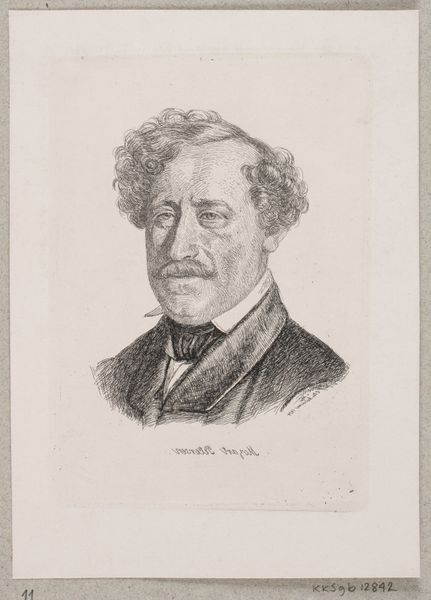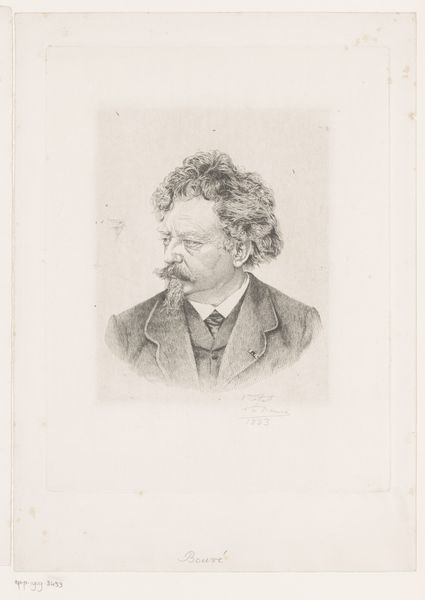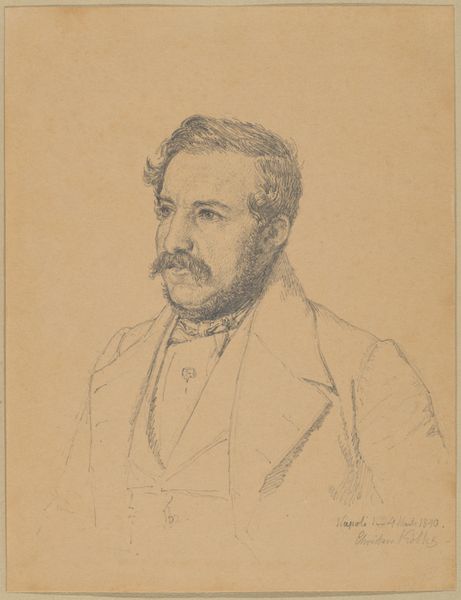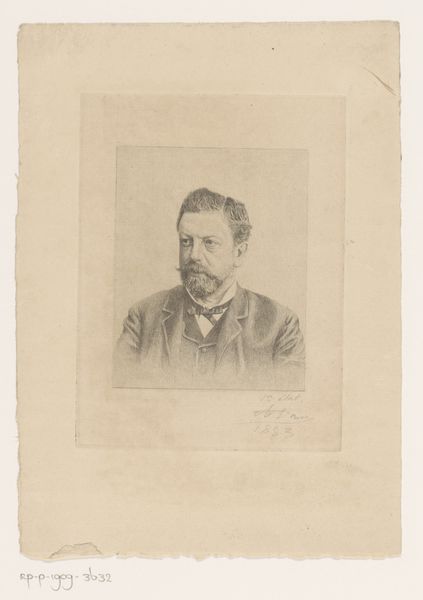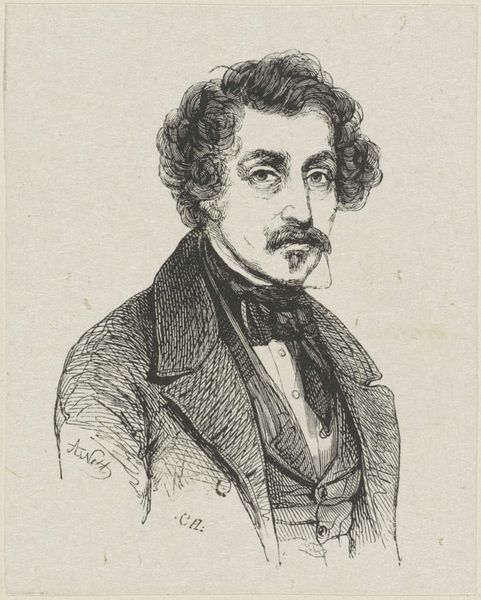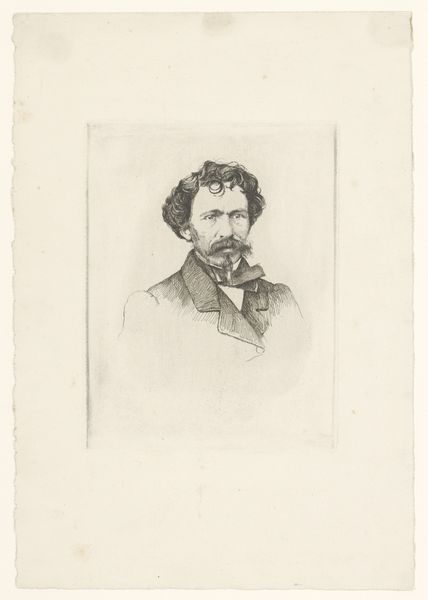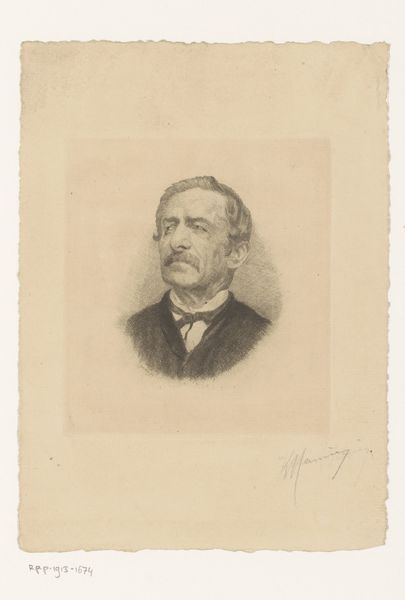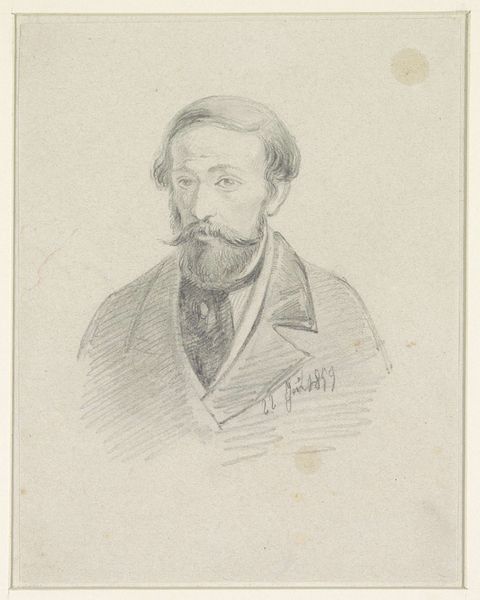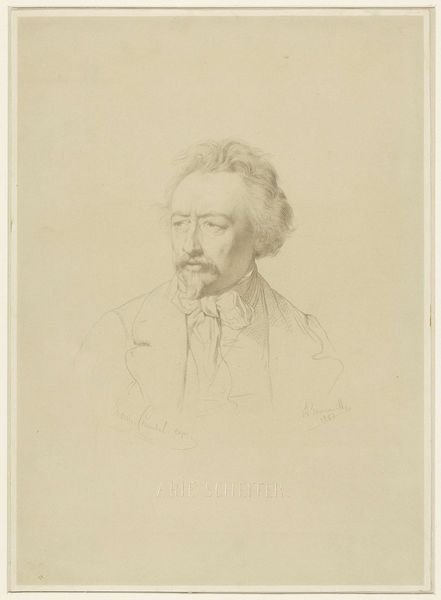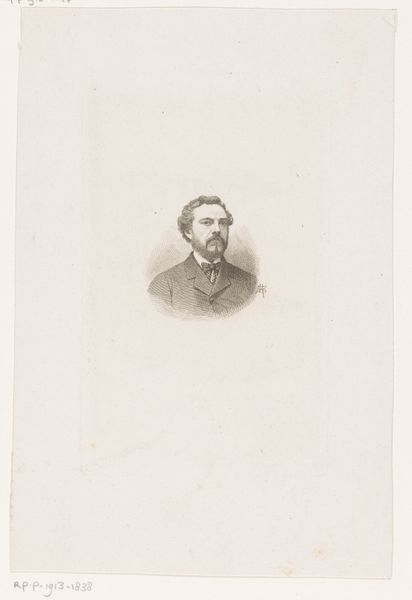
drawing, pencil
#
portrait
#
pencil drawn
#
drawing
#
toned paper
#
facial expression drawing
#
light pencil work
#
pencil sketch
#
figuration
#
personal sketchbook
#
portrait reference
#
pencil drawing
#
romanticism
#
pencil
#
portrait drawing
#
pencil work
Dimensions: height 89 mm, width 57 mm
Copyright: Rijks Museum: Open Domain
Editor: Here we have David Bles’s "Portret van de schilder Salomon Leonardus Verveer," a pencil drawing from 1849 housed at the Rijksmuseum. It's a quick sketch, capturing the sitter's rather stern expression. How do you interpret this work, especially given its historical context? Curator: It's fascinating to consider portraiture within the framework of Romanticism, and this drawing offers a lens to examine artistic identity. The subject, another painter, is presented with a certain gravitas, but the loose sketch suggests an intimacy. It makes me think about artistic circles at the time – how did artists support or compete with each other, and what role did portraiture play in solidifying those networks? What does it say that one artist memorializes another? Editor: That’s interesting. It feels very personal, a quick likeness maybe dashed off in a moment. Curator: Exactly. The apparent immediacy makes it feel raw, almost as though we are intruding on a private moment. Consider this was a period defined by significant social and political upheaval, how did Romantic artists respond to and represent themselves and their communities in contrast to traditional portrayals? Were they allies, friends, or did the portrait have political meanings too? What is emphasized? Editor: So, this isn't just a portrait; it's a statement about the subject, the artist, and their world. It’s like a little document of their relationship. Curator: Precisely! And also the concept of artistic identity itself in the rapidly changing art world. The casual medium could also have a defiant symbolism related to older, aristocratic portraiture that could be perceived as exclusionary to a changing artistic class system. It all comes together. Editor: I see the portrait in a whole new light now! Thanks for opening my eyes to the broader conversation it holds. Curator: Absolutely. These pieces become much richer when viewed through socio-historical frameworks, so it can inform a viewer so much more about the social fabric that the artist existed within.
Comments
No comments
Be the first to comment and join the conversation on the ultimate creative platform.

